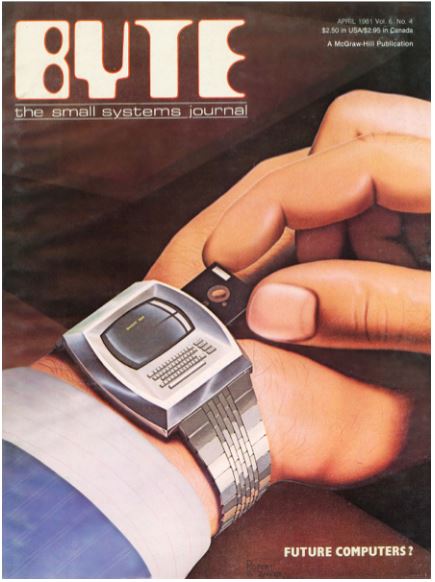The iPad Is a Tease
By Jean-Louis Gass�e
http://www.mondaynote.com/
As Apple is about to release its latest quarterly numbers, new questions arise about the iPad's "anemic" growth. The answer is simple - but the remedies are not.
The iPad isn't growing anymore. What happened?
In anticipation of Apple's latest quarterly numbers - they'll be announced on April 23rd - the usual prerelease estimates swirl around the Web. You can find Yahoo's summary of analysts' estimates here; Paul Leitao's Posts At Eventide provides a detailed and tightly reasoned history and forecast for the March 2014 quarter.
The consensus is that for the company as a whole, there won't be any surprises: Apple will meet the guidance stated in its January 27th earnings call. Revenue will be down, as befits the quarter following the Christmas shopping frenzy, but profit per share (EPS) will be up a bit.
Boring. With one glaring exception:

(Source: The Braeburn Group)
In the same quarter for 2013, the iPad's year-on-year growth was about 55%. Some of this phenomenal growth was due to a rebound from earlier iPad mini supply constraints, but that doesn't explain the precipitous drop from 2013 to this year.
Are the iPad's go-go years over?
As Philip Elmer-DeWitt reports on his Apple 2.0 site, this gloomy prediction appears to be the majority opinion among analysts. Elmer-DeWitt acknowledges that there are outliers - Horace Dediu comes in at the high end with an estimate of 21.8M units (and positive growth) - but "the consensus estimate of 19.3 million, would represent a 0.7% decline".
It's one thing for a product to increase in unit volume sales but still grow less than the overall market - that's simply a loss of market share. And we know how fallacious share numbers can be in the absence of an honest disclosure of sales volumes. No, assuming the estimates are right, what we have here isn't market share dilution, it isn't a post-Christmas lull, it's a year-to-year decline in absolute unit numbers.
Why?
I'll offer an opinion: The iPad is a tease. Its meteoric debut raised expectations that it can't currently meet.
To explain, let's go back four years.
Steve Jobs' last creation took us by surprise, price included, and was initially panned by many in the kommentariat, from Eric Schmidt to Dan Lyons (who subsequentlyrecanted). But normal humans joyously took to the iPad. In 1984, one of Apple's tag line for the Mac was "Macintosh - the computer for the rest of us." Decades later, the iPad was quickly perceived as a sort of second coming. As MacWorld put it in June 2011:Now Apple's really "for the rest of us".
Indeed, the iPad wasn't targeted at a particular type - or generation - of user. David Hockney has produced exquisite iPad "paintings". Daniel Borel, Logitech's co-founder, told me that his two-year old grandson immediately "got" the iPad (even if it was just to play games, but...he's two). Coming out of our breakfast meeting, I crossed paths with a couple of seniors - octogenarians, probably - who proudly told me that they were going to an iPad training session at the Palo Alto Apple Store.
The iPad rose and rose. It won legions of admirers because of its simplicity: No windows (no pun), no file system, no cursor keys (memories of the first Mac). Liberated from these old-style personal computer ways, the iPad cannibalized PC sales and came to be perceived as the exemplar Post-PC device.
But that truly blissful simplicity exacts a high price. I recall my first-day disappointment when I went home and tried to write a Monday Note on my new iPad. It's difficult - impossible, really - to create a real-life composite document, one that combines graphics, spreadsheet data, rich text from several sources and hyperlinks. For such tasks, the Rest of Us have to go back to our PCs and Macs.
I realize there are iPad users who happily perform "productivity tasks" on their iPads. Most of them use a stand and keyboard sold in a number of guises. The number of different offerings is a testament to a real need. (We'll note that Apple doesn't seem eager to address this issue directly. They don't offer an "iPad-sized" keyboard - the Bluetooth keyboard I use is fine for my iMac, but feels gargantuan when I pair it with my iPad. And Apple's iPad Dock hasn't been updated to work with the "Lightning" connector on the newer iPads.)
The iPad's limitations extend beyond classic office productivity tasks. I just tried to build an itinerary for a long postponed road trip, driving all the way from Key West Florida to Palo Alto. On a Mac, you can easily "print to PDF" to produce a map for each leg of the trip. Then you use the wonderful Preview app (I salute its author and dedicated maintainer) to emend unneeded pages, drag and drop, combine and rearrange the PDF files into a single document. Don't try this on an iPad: How would you "print-to-PDF" a map page, let alone combine such pages?
Despite the inspiring ads, Apple's hopes for the iPad overshot what the product can actually deliver. Although there's a large numbers of iPad-only users, there's also a substantial population of dual-use customers for whom both tablets and conventional PCs are now part of daily life.
I see the lull in iPad sales as a coming down to reality after unrealistic expectations, a realization that iPads aren't as ready to replace PCs as many initially hoped.
In his introduction of the iPad in January, 2010, Jobs himself seemed a bit tentative when positioning his latest creation. Sitting in the Le Corbusier chair, Jobs stated that his new tablet would have to "find its place between the iPhone and the Mac".
This "in-between place" is still elusive.
Microsoft tried to find that "in-between place", and we know how well that worked. For the Redmond company, the iPad's limitations were an opportunity: Simply emulate the charm and intuitiveness of the market-leading tablet and cater to the needs of the "professional" user. With its touch interface and keyboard, the Surface device sounded like the solution that had eluded Microsoft's earlier PC Tablets. In the field, customers didn't like the dueling interfaces, nor the introduction of layers of complexity where simplicity had been promised. Surface tablets didn't move the revenue needle and cost Microsoft a $900M write-down.
The iPad represents about 20% of Apple's revenue; allowing iPad numbers to plummet isn't acceptable. So far, Apple's bet has been to keep the iPad simple, rigidly so perhaps, rather than creating a neither-nor product: No longer charmingly simple, but not powerful enough for real productivity tasks. But if the iPad wants to cannibalize more of the PC market, it will have to remove a few walls.
Specifically, the iPad is a computer, it has a file system, directories, and the like - why hide these "details" from users? Why prevent us from hunting around for the bits and bobs we need to assemble a brochure or a trip itinerary?
None of this is news to Apple execs, but they also know that success doesn't depend onWhat, on a simple feature list. The next step in iPad growth will depend on How new features are integrated into the user experience. It's a tricky game of the Best of Both Worlds...and it tripped up Microsoft.
When will we know? I have no idea. Perhaps at the WWDC this coming June.







 "The Industry that Vents Together Stays Together"
"The Industry that Vents Together Stays Together"